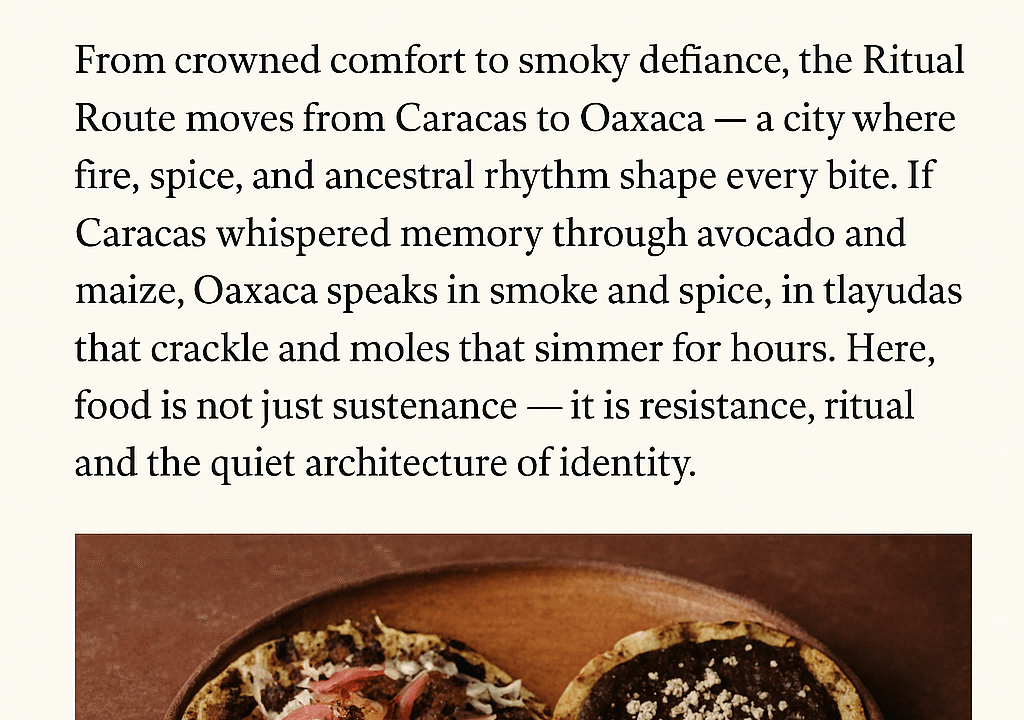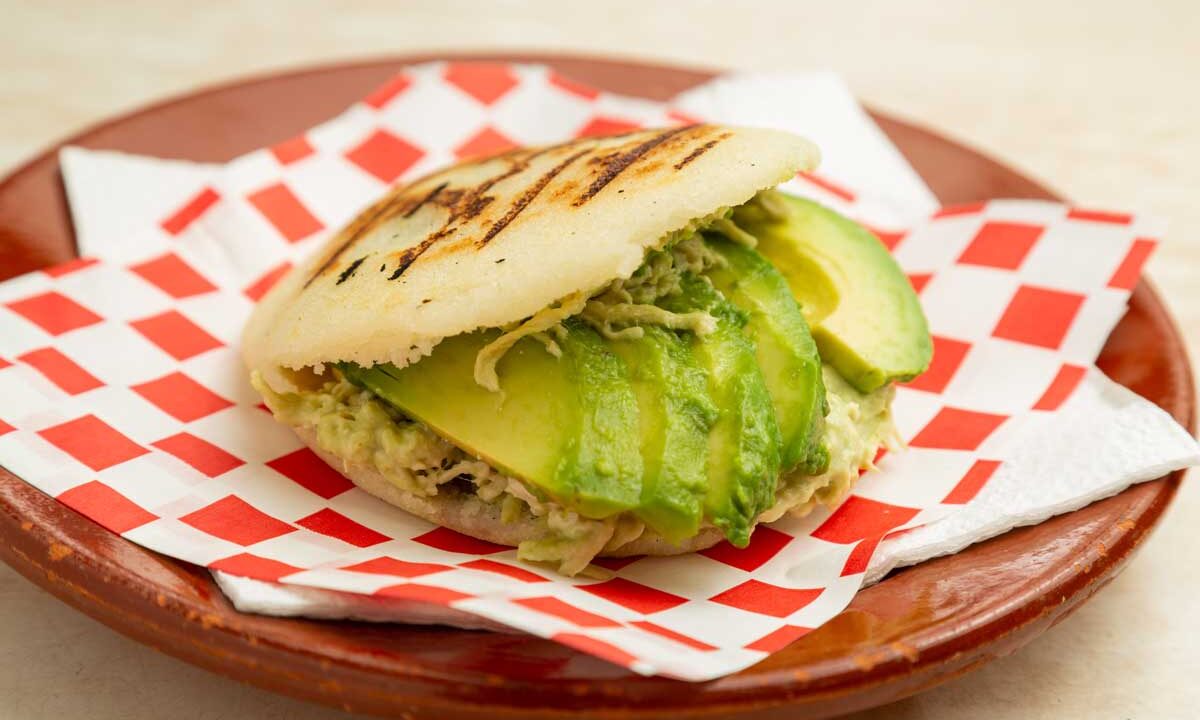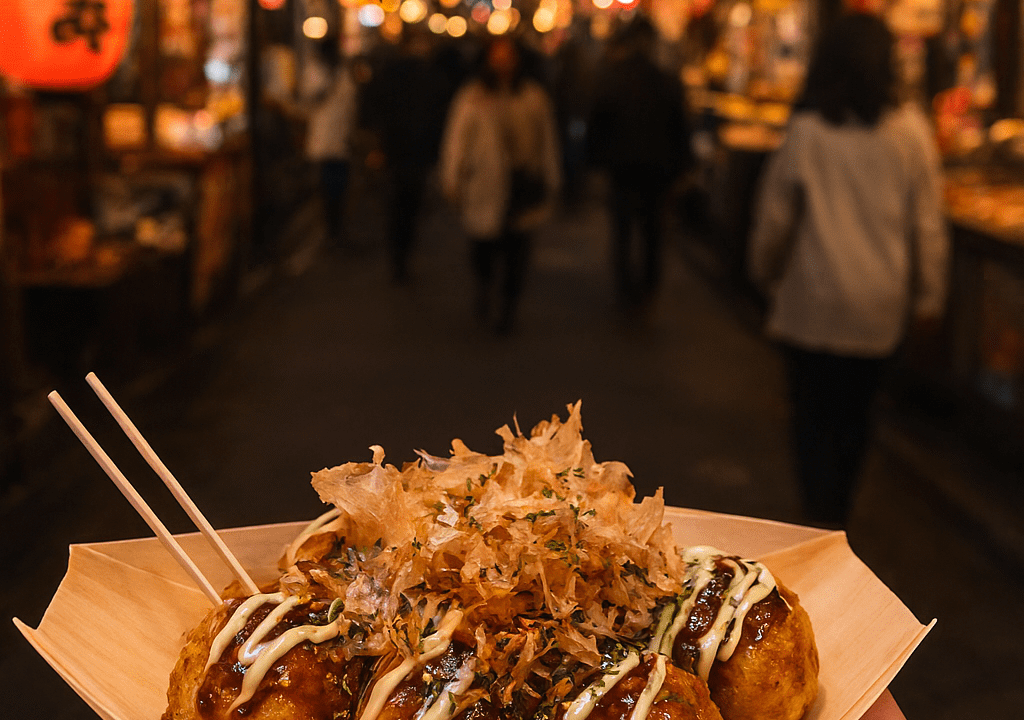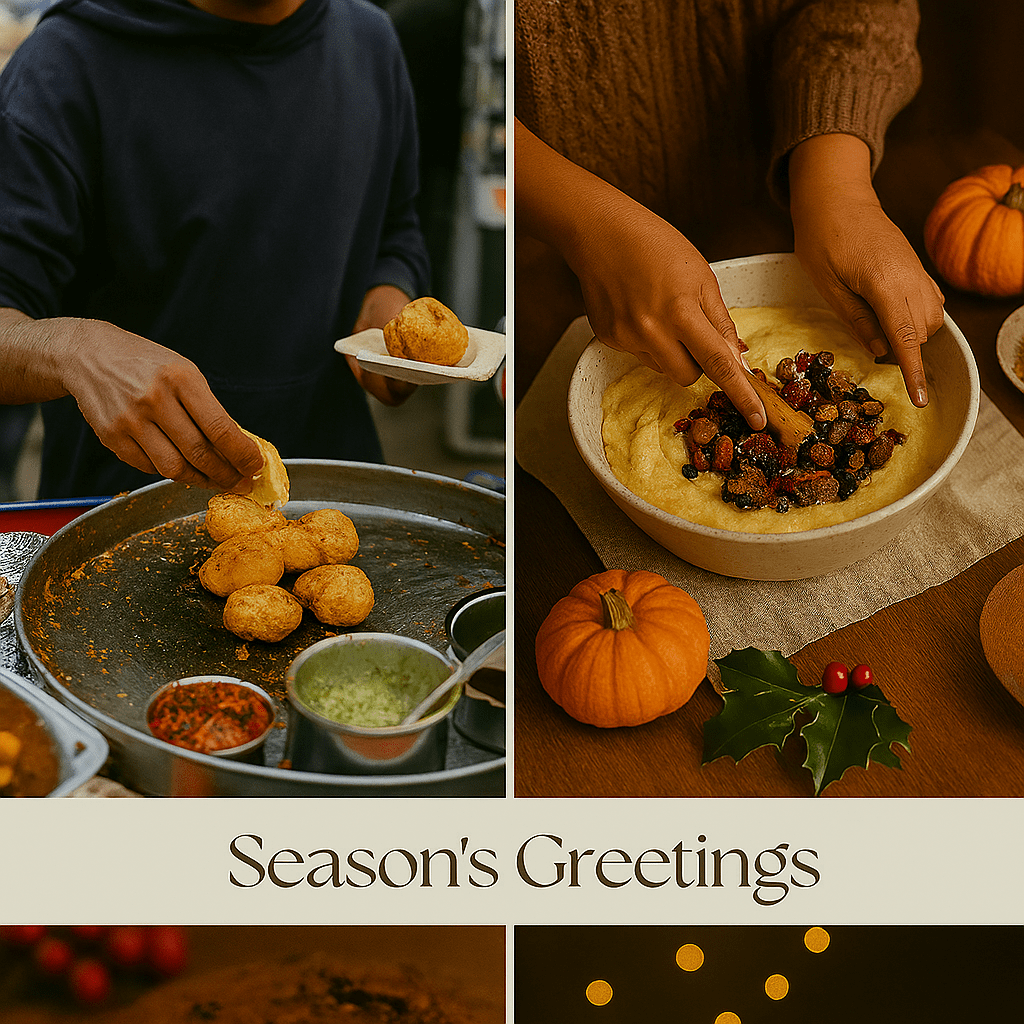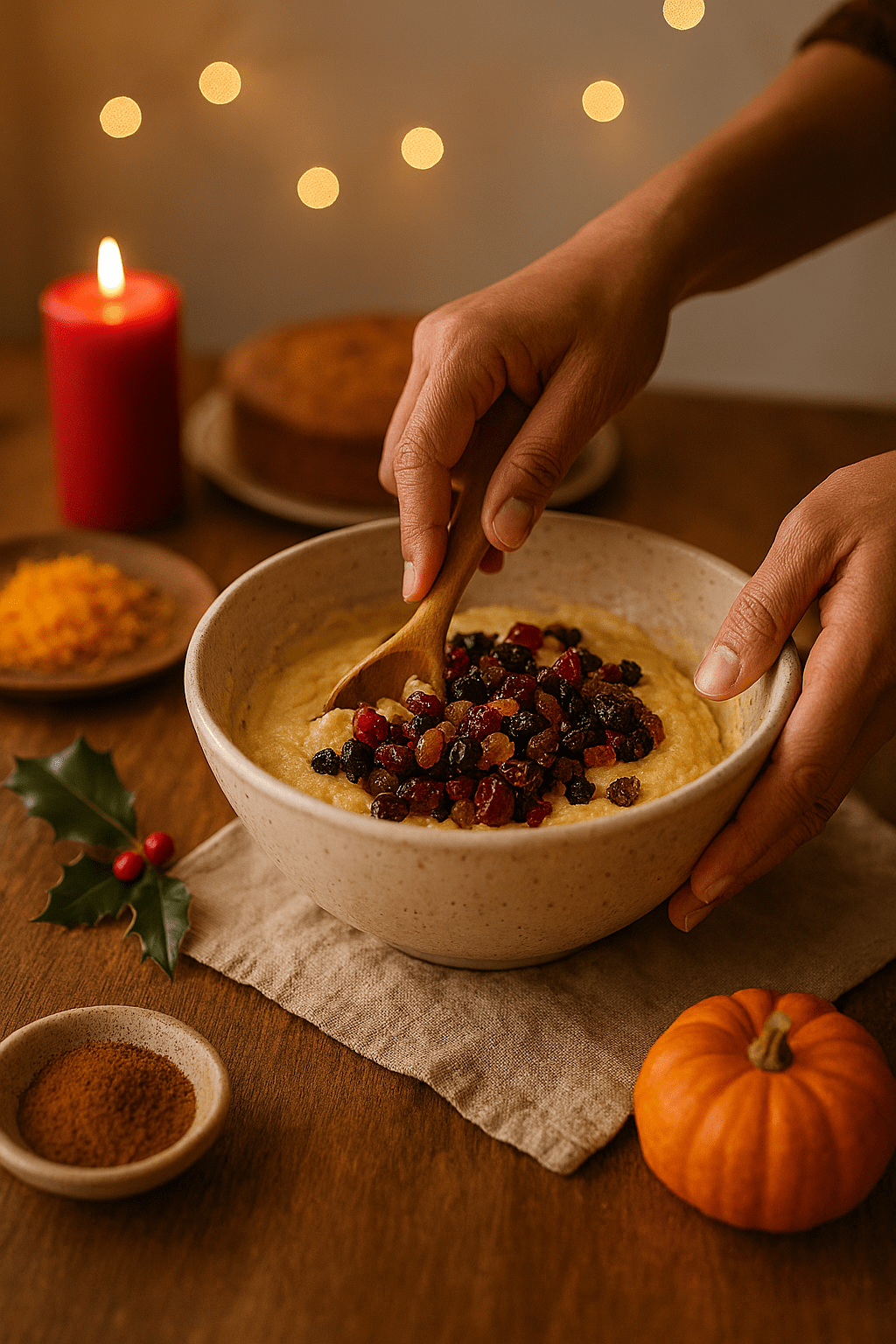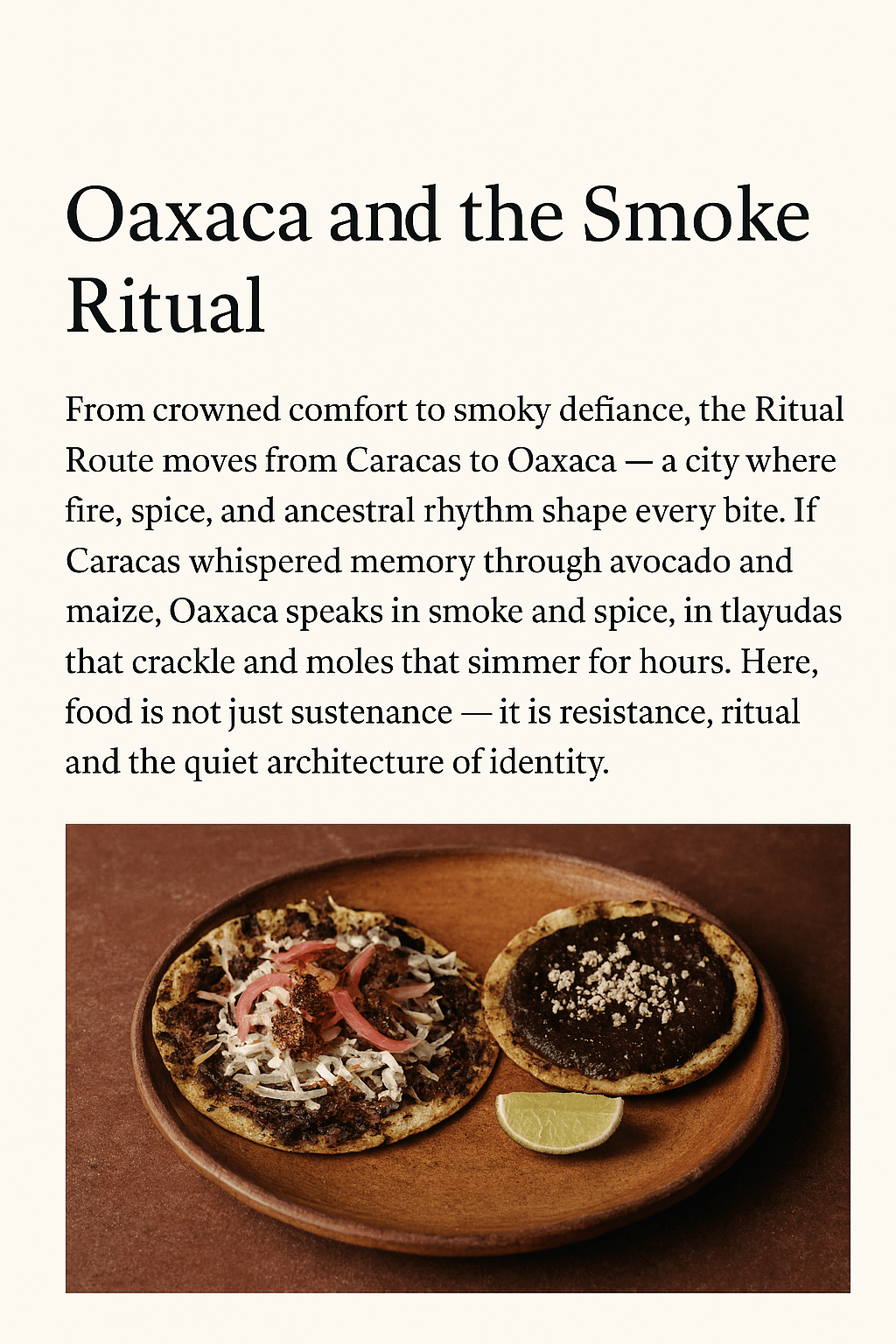From bifanas in Alfama to vada pavs in Dadar, the streets once fed us rhythm. They taught us survival — quick bites, bold flavors, communal energy. But as the season shifts, the pulse slows. Hands gather over fruit and spice, spirits poured in celebration. The cake mixing ceremony begins, and with it, a new arc: Season’s Greetings.
Caking mixing as a cultural ritual
Each stir is a memory. Each ingredient, a story. The cake mixing ceremony is less about baking and more about continuity. In Mumbai, families gather around bowls of dried fruit, candied peel, and spice, soaking them in rum or brandy weeks before Christmas. In Lisbon, citrus zest and cinnamon echo the same communal rhythm.
This ritual is a reminder that food is never just sustenance — it is memory preserved in flavor. We once wrote about that rhythm in From Dadar to Alfama, where bifanas and pastel de nata carried the pulse of Lisbon’s streets. That post now feels like a prelude to this season’s gratitude, where the act of stirring fruit mirrors the act of stirring memory.
► Watch the Cake Mixing Ceremony Video
Gratitude in the Mixing Bowl
Gratitude isn’t always loud. Sometimes, it’s soaked in rum and stirred with care. The cake mixing ceremony becomes a quiet thanksgiving — a ritual of abundance shaped by patience.
In India, Thanksgiving is not a mainstream festival, yet gratitude finds its own forms. Families gather for Diwali, Christmas, or Eid, each celebration carrying echoes of thankfulness. The cake mixing bowl becomes a symbol of this adaptation: a ritual borrowed, reshaped, and made our own.
The act of mixing is communal. Everyone adds a handful of fruit, a pinch of spice, a splash of spirit. The bowl becomes a collective ledger of generosity. And when the cake is finally baked, sliced, and shared, it carries the weight of gratitude — abundance best when shared.
This article traces the tradition from 17th‑century Europe to its adoption in India, highlighting the communal spirit and symbolism of abundance.
From Street to Soul
Street food taught us survival. It was fast, bold, and necessary. But the cake mixing ceremony teaches us to pause. To stir slowly. To wait.
The trilogy rhythm remains intact: Street Food Diaries gave us pace, Season’s Greetings gives us pause. Together, they form a narrative arc that balances speed with reflection.
The transition is not abrupt. It is layered, like fruit soaking in spirit. The flavors of Dadar’s vada pavs linger even as the batter rests. The communal energy of Lisbon’s bifana stalls echoes in the quiet of Mumbai kitchens. The street and the season are not opposites; they are chapters in the same story.
The Oven Waits
The batter rests. The oven waits. So do we — for warmth, for stories, for the season to rise. The cake mixing ceremony is not just about cake; it is about anticipation. It reminds us that rituals are as much about waiting as they are about doing.
As the oven hums, we prepare for what comes next: tables set for Thanksgiving, gifts wrapped for Christmas, flavors shared across cultures. The arc of Season’s Greetings begins here, with fruit and spice, with gratitude and memory.
Street food taught us rhythm. Season’s Greetings reminds us of gratitude. Together, they form a trilogy cadence that carries us from survival to celebration, from the street to the soul.
Closing Note
This is the first post in the Season’s Greetings arc. Next week, we’ll explore
“A Quiet Thanksgiving” — how gratitude rituals adapt across cultures, from Mumbai’s festive tables to global traditions.
The oven waits, and so do we. The season has begun. The cake mixing ceremony reminds us that gratitude rises like fruit in batter,
a rhythm that continues in our Thanksgiving reflections and cultural celebrations.
Further Reading:
• Thanksgiving Day– cultural history and gratitude
• Thanksgiving Reflections– gratitude in song

